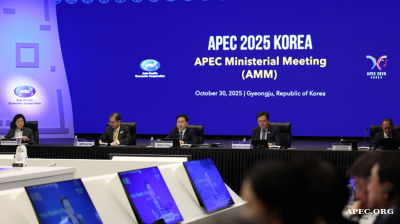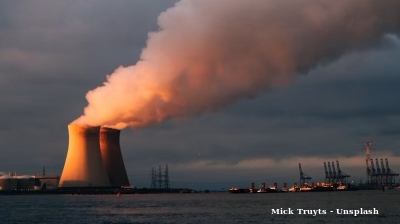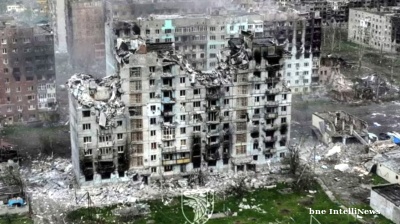As global supply chains undergo a momentous shift and western markets decouple from Russia, the world’s biggest country is looking to new markets and old partners for trade and investment.
Russia’s share of Western banks’ CEE exposure fell from 20% in 2014 to around 9% after Russian troops went into Ukraine, according to economists in a webinar hosted by the Vienna Institute for International Economic Studies (wiiw).
This has been accompanied by a spate of self-sanctioning, as over a thousand Western companies withdrew from Russia to show solidarity with Ukraine and avoid reputational damage.
Yet reduced ties with the West have also coincided with an era when the growing economies in the Global East and Global South are playing an increasingly important role in driving supply chains and world trade.
The logistics disruptions caused by the pandemic have prompted a worldwide review of how best to build resilience and re-design supply chain flows. Diversifying supply bases and trading partners is a major part of that process.
Russian business is re-orienting itself, and if macro-economic indications are anything to go by, it is doing so relatively successfully. The ruble is surging against the dollar, and Russia’s current account surplus was up 350% year on year for the first four months of 2022, according to the Central Bank of Russia (CBR).
To understand why, it is important to look not west but east and south, to the world’s most populous and fastest-growing economies.
Friendly finance
Economic relations between the West and Russia are at a low point in the history of the Russian Federation, and with little hope of the fighting in Ukraine stopping in the near future, they could cool to levels not seen since the Soviet Union.
But while Western countries are turning away from Russia, countries in the developing world diverge on their approach to Russian business, with many in favour of increased ties. Demand is increasing in Asia – the world’s fastest growing region – and new supply routes are beginning to emerge, particularly involving countries from the Global South. Now is an opportune time to invest big in joint infrastructure and trade with new partners.
This was vividly illustrated at the St Petersburg International Economic Forum (SPIEF) in June, when delegations from “unfriendly” countries were notably absent, but high-ranking officials from Turkey, Egypt, Kazakhstan, Armenia, Belarus, the UAE, Saudi Arabia and China were all in attendance.
In response to Western markets cutting ties, and in the hope of securing a prime spot in re-formulated global supply chains, Russia is rapidly reorienting towards non-aligned emerging markets to bolster its economy.
Russian exports to Japan were up almost 90% y/y in March 2022, while exports to Vietnam were up 84% in the same period, in a sign that efforts to make inroads to the ASEAN bloc are seeing a lot of success.

The China factor
The greatest success so far in the big turn to the east has been China. Russia’s partnership with its southern neighbour has been considerably strengthened over the last few years as China established itself as a leading economy and an essential component of most global supply chains.
Sino-Russian trade turnover has rocketed from a humble $5bn in 1991 to over $123bn in 2021. This is the first time that trade turnover between the two countries topped $100bn, and it secures China’s place as Russia’s biggest export and import market.
At their Beijing summit in February 2022, Chinese President Xi Jinping and Russian President Vladimir Putin proclaimed a “friendship without limits”. They reinforced the message by unveiling new deals for the trade of oil and gas, as well as lifting restrictions on grain imports.
Russian companies are also beginning to establish a foothold in the Global East. Petrochemicals manufacturer SIBUR is a case in point. The company, which sells a range of products including rubber and high value-added plastics, is among the Russian companies that have been strengthening their exports to China. Even though it has not been sanctioned by western countries, SIBUR has been increasing its co-operation with Asia as part of a global diversification strategy spearheaded by its former CEO, Dmitry Konov.
SIBUR is moving forward with its project to build a petrochemicals complex in Russia’s Far East despite difficulties caused by the recent conflict, as the company targets new markets in the Global East. The complex, due to be built in the Amur region on the Chinese border, would be 40% owned by Chinese energy and chemical giant Sinopec.
Between them, Sinopec and China’s Silk Road Fund own 17% of SIBUR. In 2021 alone, SIBUR sold 500,000 tonnes of petrochemicals products to China, with synthetic rubber accounting for the greatest share.
SIBUR announced in March that it hoped to expand trade with China by 40% in 2022. To achieve this goal, the company is growing its rail network to help increase delivery volumes to China.
SIBUR started expanding its presence in new markets from the beginning of the pandemic, when staggered lockdowns around the world necessitated agility in redirecting trade. For example, following the announcement of pandemic-related restrictions in Europe, the company quickly adapted and redistributed a significant amount of SBS (styrene-butadiene-styrene) polymers to the Chinese market, where they had previously not been marketed.
Another example of a Russian company increasing its ties with the Global East since February is aluminium producer Rusal. China has been anticipating a shortage of aluminium since 2021, due to regional production curbs.
Rusal responded with promises to “significantly” increase its supply of the non-ferrous metal to China in 2022. The company’s deputy chief executive officer Roman Andryushin hinted that “We plan to sign a series of long-term contracts for the first time in modern history”, laying the groundwork for a formal agreement between the two Pacific powers on the supply of aluminium.
Now Beijing is reportedly in talks with state-owned commodity companies about the possibility of acquiring a stake in Rusal, according to Bloomberg.
Hurdles
The increase in trade afforded by these new partnerships should not be underestimated. China’s imports of Russian oil rose 28% in May, allowing Russia to overtake Saudi Arabia as China’s largest supplier, according to Chinese statistics. India, meanwhile, is importing 760,000 barrels per day (bpd), according to market research firm Kpler.
Be that as it may, Russia is now increasingly isolated from a large part of the global economy. As a result, there will inevitably be some areas where its capacity for trade is reduced. High-tech components are one such area. Although it accounts for 16% of global semiconductor production, most of China’s semiconductors cannot yet compete with those produced by Taiwan, according to the Semiconductor Industry Association.
It remains to be seen how far Russia’s pivot to the East can compensate the shortfall from western trade. If the evidence provided by Russian companies and the economy are any indication, these strengthened partnerships will become a formidable economic force. But with the upheaval of building more infrastructure for the delivery of goods to the Asia-Pacific region just beginning, Russia faces a big task ahead.
This article first appeared in New Economy Observer (NEO), a digital publication covering the intersection between finance and social responsibility, with a special focus on emerging markets. It offers news and analysis on major issues shaping the new global economy, including climate change and renewable energy, sustainable development, e-commerce and tech innovation, and the future of work.
Image: Jean Colet via Unsplash
Features

Global leaders gather in Gyeongju to shape APEC cooperation
Global leaders are arriving in Gyeongju, the cultural hub of North Gyeongsang Province, as South Korea hosts the Asia Pacific Economic Cooperation summit. Delegates from 21 member economies are expected to discuss trade, technology and security.

Project Matador marks new South Korea-US nuclear collaboration
Fermi America, a private energy developer in the United States, is moving ahead with what could become one of the most significant privately financed clean energy projects globally.

CEE needs a new growth model as FDI plunges
wiiw economist Richard Grieveson says the CEE region’s long-standing model of attracting FDI through low labour costs no longer works.
KSE: Ukraine is facing a $53bn budget shortfall, but economy is stable for now
Ukraine is in urgent need of additional financing from partners as the continuation of the war drives up defence spending and reconstruction needs, jeopardizes budget financing, weighs on the balance of payments, and slows economic growth.




